mmcartalk
Expert
- Messages
- 4,159
- Reactions
- 2,675
MM Retro Write-Up: 1967/68 Cadillac Sedan de Ville
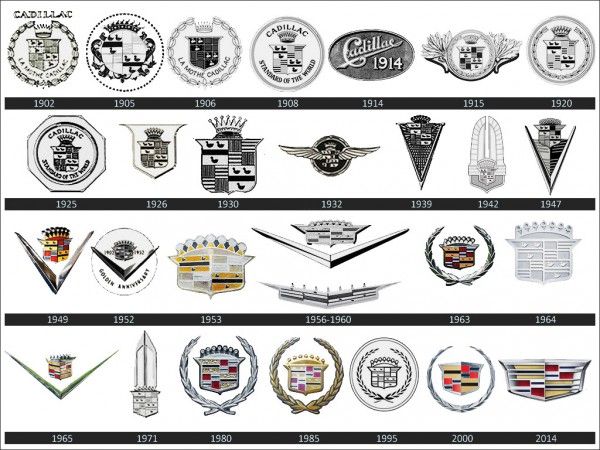
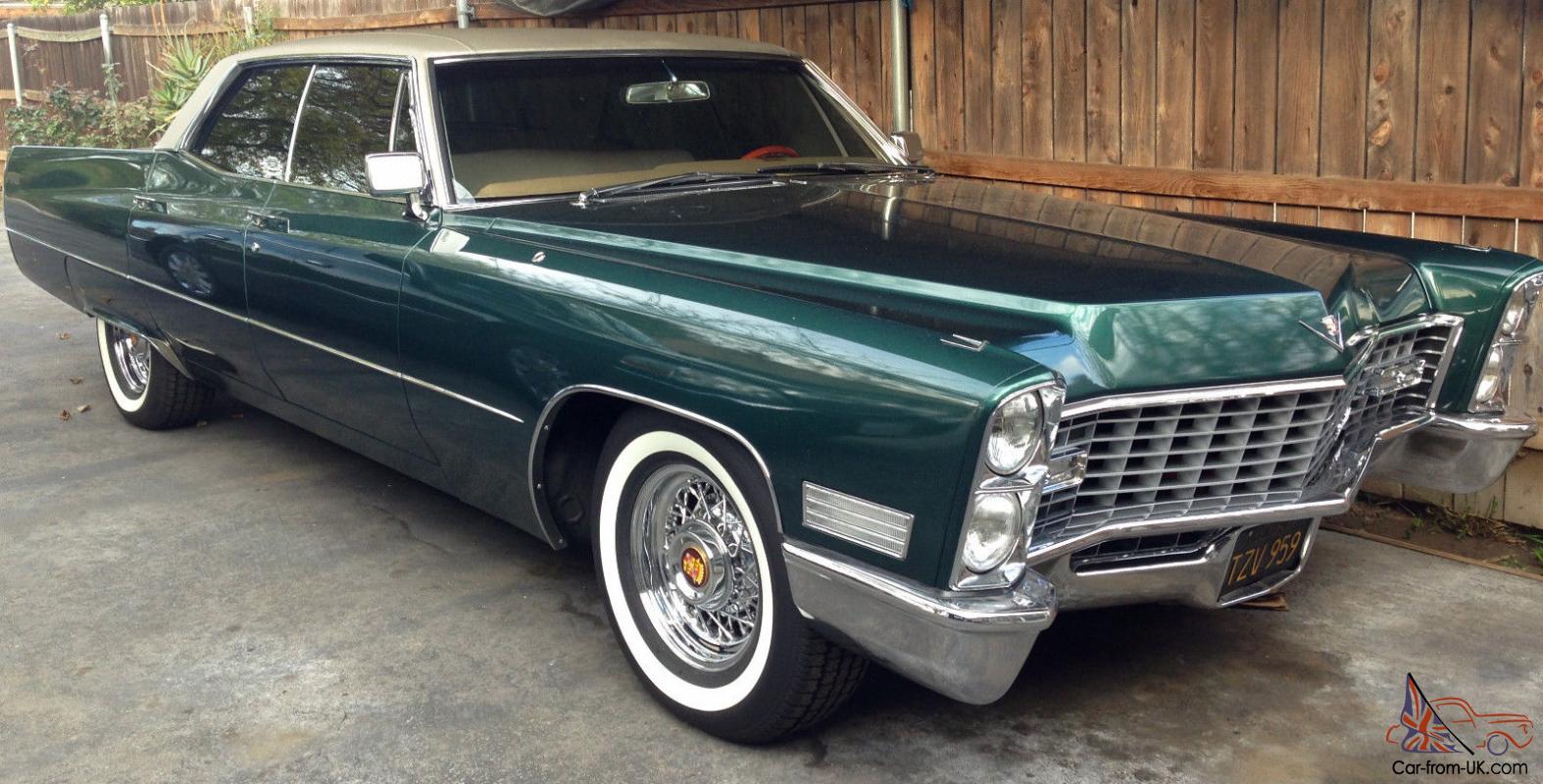


^^^^^ Sedan DeVille
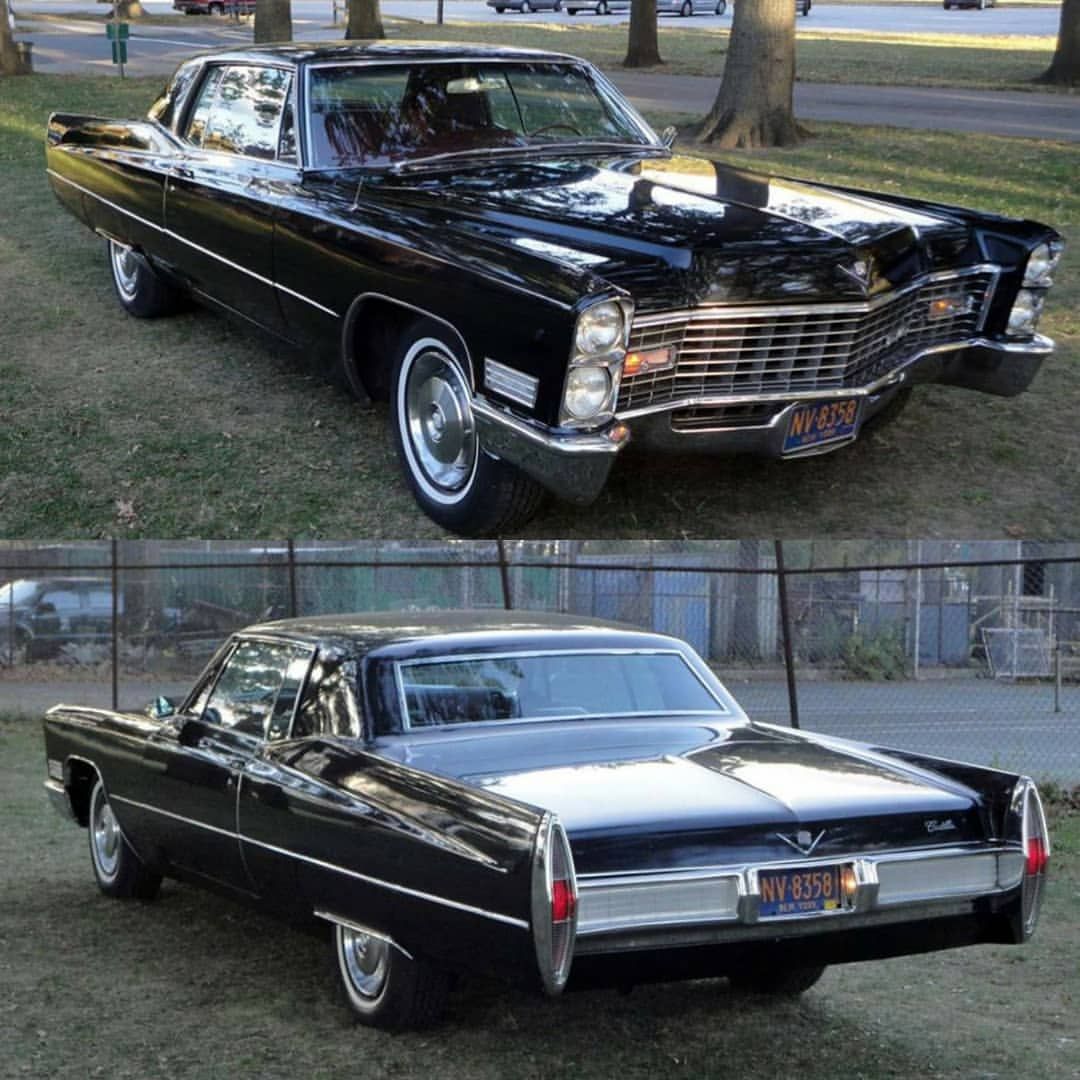
^^^^ Coupe DeVille
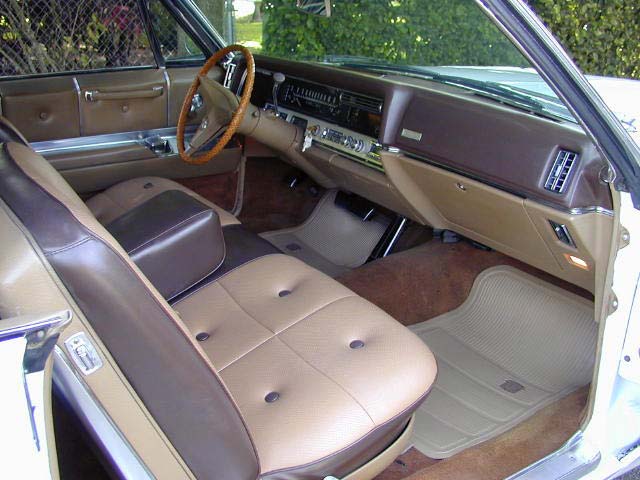

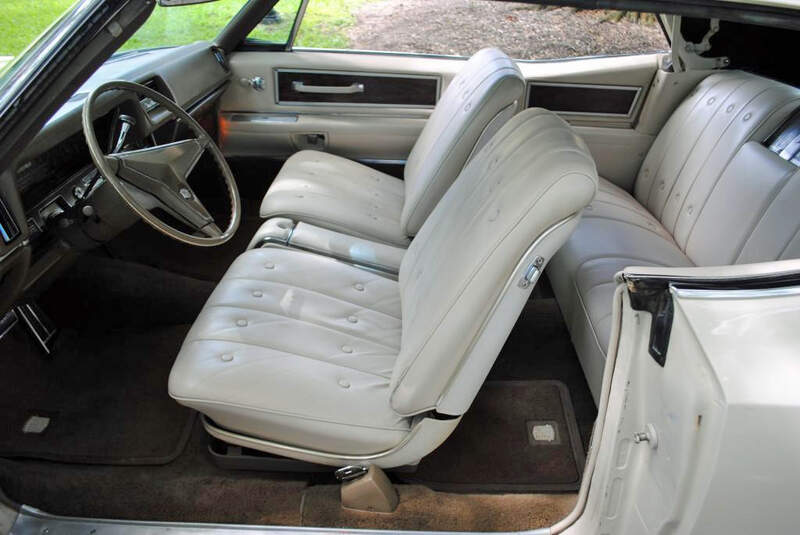

IN A NUTSHELL: The Brontosaurus of the Automotive world.
Few vehicles in automotive history capture the massiveness and opulence of traditional full-sized American luxury cars as the Cadillacs, Lincolns, and (Chrysler) Imperials of the late 1950s through the mid/late 1970s, before they were downsized in response to the fuel-crises/price-hikes and gas-mileage/emission-regulations of that decade. I've already described some of them in some of previous write-ups, particularly the one I did on the big Mercurys and Lincolns my late father used to bring home from work regularly when he worked for the Philco-Ford corporation after retiring from the Army. Unlike may other teens and young adults of the period (who worshipped the classic American muscle cars), I was a fan of the big luxo-barges, as was my best friend in high school. Not surprisingly, we both got a few "Grandpa/Grandma" heckles from our classmates...somewhat unfairly, since we both liked the muscle-cars as well, although when we got a chance to sample one, we usually did so in a safe and sensible manner and didn't try and show off or push them to their limits....which, in those days, could be reached very quickly if you deviated from a straight line.
But, my first love, back then, apart from the Slant-Six Plymouth Valiant and its durable engine, the car I learned to drive on, was (you guessed it) big luxo-barges from Detroit, particularly those from GM, as they had what were IMO the best interiors, the best fit/finish, the rest attention to detail, the slickest bodywork, the fewest defects on the assembly-line, and, along with Ford, the softest/quietest rides (Chrysler products, with the torsion-bar/leaf suspension and unibodies, tracked and handled better, but were crudely-built and were not well-isolated from the road surface).
Today, in this write-up, I want to concentrate on one of those big luxo-barges, the 1967-68 Cadillac DeVille. The name "DeVille", of course, like the origin of the name Cadillac itself, is French, and means "Of the Town" or 'Of the Village". The DeVille series itself was in production many years, from 1949 until 2005, when it became the DTS until 2011 and then dropped..to be replaced by the CT6 a few years later, until GM dropped all of its full-size sedans for good. The classic tail-fins were introduced in 1949.....inspired by the wartime twin-boom-fuselage Lockheed P-38 Lightning combat-plane, which GM's then-styling chief (Harley Earl) had a fascination with. Those fins grew ever-larger, and reached their max with the ostentatious 1959 model, and then gradually receded during the 1960s, although the vertical-taillight theme hung on for decades, and is still used at Cadillac today.
In Cadillac's heyday of the late-50s through the early 70s, although several other models were produced, such as the base Calais, top-level Fleetwood, Sixty-Special, and front-drive El Dorado, the bulk of the sales (and most of Cadillac's profits) went to the popular DeVille series, which basically were produced as the 2 Coupe DeVille/convertible and the 4-door Sedan DeVille. Wagon versions generally were not done, except for funeral-home Hearses. In those days, Cadillac was known as the "Standard of the World"...for good reason. Though, of course, popular with older folks, it was also favorite of Hollywood singers/entertainers such as Elvis Presley, Bill Cosby, and Hank Willams, who died in the back seat of his 1953 Caddy while enroute to a concert in Cincinnati. Later, Bruce Springsteen, like Elvis, had an affection for pink Cadillacs. The Mary Kay Cosmetic company gave Caddys (and sometimes Pontiacs or Buicks), painted its company-patented pinkish-tan color, to its most successful salespeople.
The '67/68 DeVille was essentially the same car, with only very minor changes cosmetically (GM redesigned its full-size cars roughly every two years back then), although the '68 got a new 472 c.i (7.7L) V8 engine, an upgrade from the 429 c.i. (7.0L) of 1967. HP, for the size, on the 7.7L, was rather modest at 375, but torque was humongous...around 500 ft-lbs. One would think that fuel-mileage would be in the single-digits, but the Turbo-Hydra-Matic transmission, in Cadillac-tuning, was noted for efficiency as well as smoothness.....even Rolls-Royce used a version of it. Before the mid-1960s, GM used several different automatics, from 2 to 4 speeds, and each one had much different driving characteristics, from the Buick Dynaflow and SuperTurbine 400 being far and away the smoothest, the Olds/Pontiac Hydra-Matic being more flexible but bumpier-shifting, ad the Cadillac Hydra-matic being somewhere in the middle, and man of the Chevys having just the two-speed Powerglide. By 1967, however, the Turbo-Hydra-Matic, to save complexity and cost, became more or less standard in the upper-level GM cars with automatics, although each division still did some individual tuning.
I'm not kidding, folks. Unless you were around back then (as I was), or have seen these behemoths at classic-auto-shows, it's hard to imagine how long and wide they were....especially compared to what passes for "big" cars today, although they were not especially heavy compared to the big SUVs of today, which can weigh three tons or more. The typical Cadillac/Lincoln/Imperial of the late-60s was from 225-230 inches long (about 19 feet), about 80 inches (6.7 feet) wide, wheelbases of from 125-130", and weighed from 4900-5400 lbs....about two and a half tons. If you think that's a lot of bulk...well, it is...although, to some extent, people who owned those cars and drove them every day were used to their difficult parking and maneuverability, traffic was much lighter and not as demanding, and parking-spaces themselves were bigger, to accomodate them. What's more, most of that length, unlike today's vehicles which are designed for space-efficiency, was NOT in the passenger cabin, but in ultra-long hoods/trunks, designed partly for the huge longitudinally-mounted engines, and partly to carry large (real) spare tires and amounts of luggage and supplies for long family vacations. On some of the longest of these cars, with their enormous hoods and trunks, the cabin, particularly on the two-doors, looks almost like an afterthought LOL. This, like with the competing Lincolns and Imperials, was typical of the '67/68 Cadillac DeVilles.
So....what was my experience with this car? Well, my late Mother's late-cousin, (who was substantially older than she was) had married a old-time Federal Treasury Agent, an associate of the famous Eliot Ness, although he was not officially part of that "Untouchables" team, made famous in the TV series and movies, fighting Al Capone's organized-crime empire in Chicago. Instead, most of his cases were in Cleveland. Anyhow, he retired, after becoming an attorney, and moved to an apartment in Washington, D.C., not far from us. He was an old-time Cadillac-lover, and, among others, had owned a gray '55 (or 56?...I can't remember) Coupe DeVille, and then later, a tan '62 4-door Sedan DeVille with a green cloth interior. When he got his new '67 (which, unlike the '62, his wife never liked)...again, tan, and this time with a tan cloth interior, he sold the old '62 to my Dad....at a reduced price, of course, since we were considered family. I was too young to drive the '62, did not yet have my license, but did get to ride in it quite a bit, and washed/waxed/polished it regularly for my Dad. My Mom did let me try it out once on a parking-lot, and I remember the all-drum power-brakes were so sensitive that they would jolt the car to a stop if you so much as breathed on the pedal...it was apparent that the engineers had no idea how to calibrate brake-proporting valves in those days for the power-assist.
But the '67 was another whole world..it was substantially larger yet, truly a dinosaur. Instead of horizontal headlights up front like previous models, it had a pair of canted-forward vertically-mounted lights, and the fins in back, as was standard Cadillac practice by then, had been considerably muted from the late '50s and early '60s. Inside, it was apparent that more attention had been given to safety than five years before (perhaps due to to Ralph Nader)...surfaces were smoother, more padded, and did not have the protruding edges and sharp materials of earlier times. And it basically drove like an ocean liner, although not quite to the extent of the later '69 Lincoln Continental I got to sample, which I covered in another write-up. I got to ride in it at first, washed it and polished it like my Dad's '62, but was still too young to drive it.
After I got my Driver's License in January of 1969, though, it was a different story. Although not perfect by any means (I made a few mistakes her and there) I was more careful than the average teen behind the wheel, and could generally be trusted. I graduated the following year, and he came over to the house one day and let me take it (and a young lady friend of mine) down to the photo-studio to get our official senior-pictures for High-School graduation. Later, I got a chance to sample it on a long trip, as my brother's class was giving some kind of presentation (I don't remember exactly what it was) in the tiny hamlet of Orkney Springs, VA, on the VA/WV border the other side of Luray/New-Market, VA, quite a ways from D.C....I'd say probably 300 miles round-trip. By then, he had gotten to the point (and the age) where he just as soon left the driving to others. So, he, my Mom, and I climbed in, and (big surprise LOL).....I drove. Quite a trip out there and back, over I-66/Route 29/211, up and over the winding (and dicey) mountain-pass at Shenandoah National Park and Skyline Drive in the Blue Ridge Mountains to Luray, then over Massanutten Mountain, (also winding, but not quite as hairy) to New Market, then up U.S. 11/I-81 and a side road to Orkney Springs. Then, of course, all the way back to D.C. Darn, was that car comfortable...there's a reason why those cars cost what they did. It was so relaxing to drive that one could go all day and feel like they had just gotten a good night's sleep.
Yes, I like to look back and remember those cars, but it is apparent that they were designed for conditions that simply don't exist any more....or to the same extent, as half a century ago. Roads today are more congested, parking spaces are smaller, 100-Octane-Leaded gas, which those cars required, is no longer available (except may for racing use), Today's octane-boosters have only a limited effect. Trying to navigate a boat like that would simply be impractical in today' world. And, the way some people think today, over-zealous environmentalists would probably vandalize it as a symbol of extravagance and pollution. They constantly needed tune-ups, oil changes/grease-jobs, and other service/maintenance which is much less-frequent or nonexistent today. Crossovers/SUVs, today, can carry roughly the same amount of passengers and cargo, in much smaller and more space-efficient packages, though sometimes the engines lack the torque of those old monsters. But for comfort? Yes....Bring those old steamships on.
And, as Always.....Happy Car-Memories.

MM
__________________

DRIVING IS BELIEVING



^^^^^ Sedan DeVille

^^^^ Coupe DeVille


IN A NUTSHELL: The Brontosaurus of the Automotive world.
Few vehicles in automotive history capture the massiveness and opulence of traditional full-sized American luxury cars as the Cadillacs, Lincolns, and (Chrysler) Imperials of the late 1950s through the mid/late 1970s, before they were downsized in response to the fuel-crises/price-hikes and gas-mileage/emission-regulations of that decade. I've already described some of them in some of previous write-ups, particularly the one I did on the big Mercurys and Lincolns my late father used to bring home from work regularly when he worked for the Philco-Ford corporation after retiring from the Army. Unlike may other teens and young adults of the period (who worshipped the classic American muscle cars), I was a fan of the big luxo-barges, as was my best friend in high school. Not surprisingly, we both got a few "Grandpa/Grandma" heckles from our classmates...somewhat unfairly, since we both liked the muscle-cars as well, although when we got a chance to sample one, we usually did so in a safe and sensible manner and didn't try and show off or push them to their limits....which, in those days, could be reached very quickly if you deviated from a straight line.
But, my first love, back then, apart from the Slant-Six Plymouth Valiant and its durable engine, the car I learned to drive on, was (you guessed it) big luxo-barges from Detroit, particularly those from GM, as they had what were IMO the best interiors, the best fit/finish, the rest attention to detail, the slickest bodywork, the fewest defects on the assembly-line, and, along with Ford, the softest/quietest rides (Chrysler products, with the torsion-bar/leaf suspension and unibodies, tracked and handled better, but were crudely-built and were not well-isolated from the road surface).
Today, in this write-up, I want to concentrate on one of those big luxo-barges, the 1967-68 Cadillac DeVille. The name "DeVille", of course, like the origin of the name Cadillac itself, is French, and means "Of the Town" or 'Of the Village". The DeVille series itself was in production many years, from 1949 until 2005, when it became the DTS until 2011 and then dropped..to be replaced by the CT6 a few years later, until GM dropped all of its full-size sedans for good. The classic tail-fins were introduced in 1949.....inspired by the wartime twin-boom-fuselage Lockheed P-38 Lightning combat-plane, which GM's then-styling chief (Harley Earl) had a fascination with. Those fins grew ever-larger, and reached their max with the ostentatious 1959 model, and then gradually receded during the 1960s, although the vertical-taillight theme hung on for decades, and is still used at Cadillac today.
In Cadillac's heyday of the late-50s through the early 70s, although several other models were produced, such as the base Calais, top-level Fleetwood, Sixty-Special, and front-drive El Dorado, the bulk of the sales (and most of Cadillac's profits) went to the popular DeVille series, which basically were produced as the 2 Coupe DeVille/convertible and the 4-door Sedan DeVille. Wagon versions generally were not done, except for funeral-home Hearses. In those days, Cadillac was known as the "Standard of the World"...for good reason. Though, of course, popular with older folks, it was also favorite of Hollywood singers/entertainers such as Elvis Presley, Bill Cosby, and Hank Willams, who died in the back seat of his 1953 Caddy while enroute to a concert in Cincinnati. Later, Bruce Springsteen, like Elvis, had an affection for pink Cadillacs. The Mary Kay Cosmetic company gave Caddys (and sometimes Pontiacs or Buicks), painted its company-patented pinkish-tan color, to its most successful salespeople.
The '67/68 DeVille was essentially the same car, with only very minor changes cosmetically (GM redesigned its full-size cars roughly every two years back then), although the '68 got a new 472 c.i (7.7L) V8 engine, an upgrade from the 429 c.i. (7.0L) of 1967. HP, for the size, on the 7.7L, was rather modest at 375, but torque was humongous...around 500 ft-lbs. One would think that fuel-mileage would be in the single-digits, but the Turbo-Hydra-Matic transmission, in Cadillac-tuning, was noted for efficiency as well as smoothness.....even Rolls-Royce used a version of it. Before the mid-1960s, GM used several different automatics, from 2 to 4 speeds, and each one had much different driving characteristics, from the Buick Dynaflow and SuperTurbine 400 being far and away the smoothest, the Olds/Pontiac Hydra-Matic being more flexible but bumpier-shifting, ad the Cadillac Hydra-matic being somewhere in the middle, and man of the Chevys having just the two-speed Powerglide. By 1967, however, the Turbo-Hydra-Matic, to save complexity and cost, became more or less standard in the upper-level GM cars with automatics, although each division still did some individual tuning.
I'm not kidding, folks. Unless you were around back then (as I was), or have seen these behemoths at classic-auto-shows, it's hard to imagine how long and wide they were....especially compared to what passes for "big" cars today, although they were not especially heavy compared to the big SUVs of today, which can weigh three tons or more. The typical Cadillac/Lincoln/Imperial of the late-60s was from 225-230 inches long (about 19 feet), about 80 inches (6.7 feet) wide, wheelbases of from 125-130", and weighed from 4900-5400 lbs....about two and a half tons. If you think that's a lot of bulk...well, it is...although, to some extent, people who owned those cars and drove them every day were used to their difficult parking and maneuverability, traffic was much lighter and not as demanding, and parking-spaces themselves were bigger, to accomodate them. What's more, most of that length, unlike today's vehicles which are designed for space-efficiency, was NOT in the passenger cabin, but in ultra-long hoods/trunks, designed partly for the huge longitudinally-mounted engines, and partly to carry large (real) spare tires and amounts of luggage and supplies for long family vacations. On some of the longest of these cars, with their enormous hoods and trunks, the cabin, particularly on the two-doors, looks almost like an afterthought LOL. This, like with the competing Lincolns and Imperials, was typical of the '67/68 Cadillac DeVilles.
So....what was my experience with this car? Well, my late Mother's late-cousin, (who was substantially older than she was) had married a old-time Federal Treasury Agent, an associate of the famous Eliot Ness, although he was not officially part of that "Untouchables" team, made famous in the TV series and movies, fighting Al Capone's organized-crime empire in Chicago. Instead, most of his cases were in Cleveland. Anyhow, he retired, after becoming an attorney, and moved to an apartment in Washington, D.C., not far from us. He was an old-time Cadillac-lover, and, among others, had owned a gray '55 (or 56?...I can't remember) Coupe DeVille, and then later, a tan '62 4-door Sedan DeVille with a green cloth interior. When he got his new '67 (which, unlike the '62, his wife never liked)...again, tan, and this time with a tan cloth interior, he sold the old '62 to my Dad....at a reduced price, of course, since we were considered family. I was too young to drive the '62, did not yet have my license, but did get to ride in it quite a bit, and washed/waxed/polished it regularly for my Dad. My Mom did let me try it out once on a parking-lot, and I remember the all-drum power-brakes were so sensitive that they would jolt the car to a stop if you so much as breathed on the pedal...it was apparent that the engineers had no idea how to calibrate brake-proporting valves in those days for the power-assist.
But the '67 was another whole world..it was substantially larger yet, truly a dinosaur. Instead of horizontal headlights up front like previous models, it had a pair of canted-forward vertically-mounted lights, and the fins in back, as was standard Cadillac practice by then, had been considerably muted from the late '50s and early '60s. Inside, it was apparent that more attention had been given to safety than five years before (perhaps due to to Ralph Nader)...surfaces were smoother, more padded, and did not have the protruding edges and sharp materials of earlier times. And it basically drove like an ocean liner, although not quite to the extent of the later '69 Lincoln Continental I got to sample, which I covered in another write-up. I got to ride in it at first, washed it and polished it like my Dad's '62, but was still too young to drive it.
After I got my Driver's License in January of 1969, though, it was a different story. Although not perfect by any means (I made a few mistakes her and there) I was more careful than the average teen behind the wheel, and could generally be trusted. I graduated the following year, and he came over to the house one day and let me take it (and a young lady friend of mine) down to the photo-studio to get our official senior-pictures for High-School graduation. Later, I got a chance to sample it on a long trip, as my brother's class was giving some kind of presentation (I don't remember exactly what it was) in the tiny hamlet of Orkney Springs, VA, on the VA/WV border the other side of Luray/New-Market, VA, quite a ways from D.C....I'd say probably 300 miles round-trip. By then, he had gotten to the point (and the age) where he just as soon left the driving to others. So, he, my Mom, and I climbed in, and (big surprise LOL).....I drove. Quite a trip out there and back, over I-66/Route 29/211, up and over the winding (and dicey) mountain-pass at Shenandoah National Park and Skyline Drive in the Blue Ridge Mountains to Luray, then over Massanutten Mountain, (also winding, but not quite as hairy) to New Market, then up U.S. 11/I-81 and a side road to Orkney Springs. Then, of course, all the way back to D.C. Darn, was that car comfortable...there's a reason why those cars cost what they did. It was so relaxing to drive that one could go all day and feel like they had just gotten a good night's sleep.
Yes, I like to look back and remember those cars, but it is apparent that they were designed for conditions that simply don't exist any more....or to the same extent, as half a century ago. Roads today are more congested, parking spaces are smaller, 100-Octane-Leaded gas, which those cars required, is no longer available (except may for racing use), Today's octane-boosters have only a limited effect. Trying to navigate a boat like that would simply be impractical in today' world. And, the way some people think today, over-zealous environmentalists would probably vandalize it as a symbol of extravagance and pollution. They constantly needed tune-ups, oil changes/grease-jobs, and other service/maintenance which is much less-frequent or nonexistent today. Crossovers/SUVs, today, can carry roughly the same amount of passengers and cargo, in much smaller and more space-efficient packages, though sometimes the engines lack the torque of those old monsters. But for comfort? Yes....Bring those old steamships on.
And, as Always.....Happy Car-Memories.

MM
__________________

DRIVING IS BELIEVING

Last edited:
